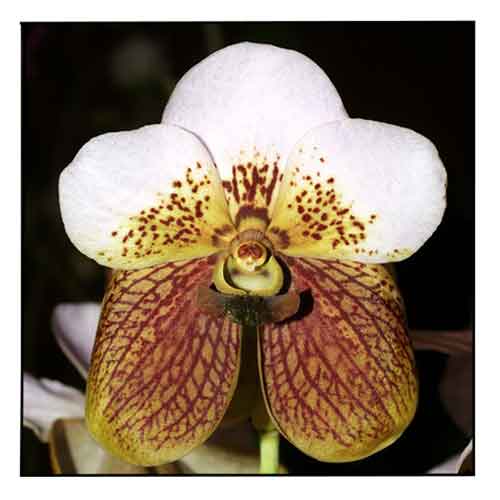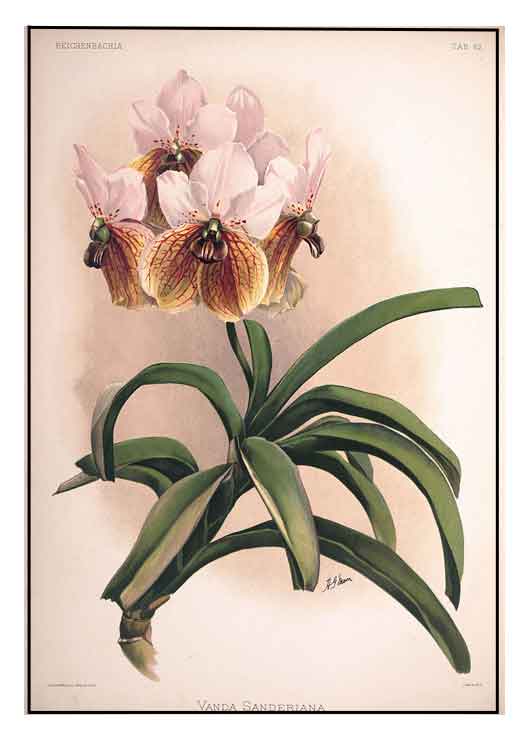 Gen info Gen info
- Orchidaceae is the largest family of flowering plants with over 35,000 species and 850 genera, (6)
-
The orchid Waling-waling is considered the "Queen of Philippine Orchids."
- Political tidbit: There have been efforts to declare it the National Flower. In 2004, the House of Representatives filed a motion to declare Waling-waling as the country's national flower, replacing Sampaguita. Again, in 2013, a bill was passed by the Philippine Senate declaring Waling-waling as a national flower alongside the Sampaguita. The House Bill 5655 was vetoed by President Benigno Aquino III citing other means to promote, protect, and preserve the orchid without declaring it a second national flower. (2)
- Highly sought in the international orchid trade and because of over-collecting, the orchid is or fast becoming extinct in the wild. Local nurseries now propagate the species in clones through tissue culture. (5)
- "Sander's vanda" derives after Henry Frederick Conrad Sanders, a noted orchidologist. (2)
- Waling-waling has contributed to the production of many Vanda cultivars.
Botany
Vanda sanderiana is a large epiphytic orchid. Leaves are trough-like, 15 to 30 cm long. Flowers grow in clusters, 6 to 8 cm in transverse and 10 to 11 in vertical diameter. Upper three petals are lavender with dull purple spots in the lower part; lower tow petals are tinged with yellow. Leaves are numerous, with dull-purple nerves and reticulations, giving a general dull-purple color. Lip is dull purple and yellow.
 Distribution Distribution
- Native to the Philippines.
- Endemic to Mindanao in the provinces of Davao, Cotobato, and Zamboanga where it is found on the trunks of dipterocarp trees at elevations below 400 meters. (2)
- Because of over-collecting, the species is considered endangered, fast becoming extinct in the wild—the species kept alive by tissue culture propagation.
Constituents
- No phytochemical studies are available for Vanda sanderiana.
-
Orchids have shown cosmeceutical potential as anti-aging and skin moisturizing agent. Orchid extracts from Vanda coerulea and V. teres have been shown to delay aging caused by reactive oxygen species (ROS) following LV irradiation through antioxidant and anti-inflammatory activity. Orchid mucilage helps maintain skin hydration. (6)
Properties
- Study of roots suggest antimicrobial property.
Parts used
Roots.
Uses
Folkloric
- No reported folkloric medicinal use.
Others
- Ritual: Worshiped as a diwata by the indigenous Bagobo people. (2)
Studies
• Antimicrobial / Roots: Study evaluated crude extracts of roots of Vanda sanderiana, V. luzonica, Trichoglottis philippinensis and Dendrobium sanderae for antimicrobial activity using distilled water, 95% methanol and 95% ethanol as solvents against clinical isolates of S. aureus, E. coli, P. aeruginosa and Candida albicans. The crude methanol and ethanol root extract of Vanda luzonica and V. sanderiana inhibited the growth of S. aureus. (3)
Availability
Endangered.
Cultivated. |

![]()




 Distribution
Distribution